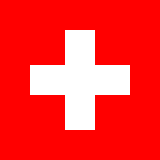Gender Quotas Database

Switzerland
Western Europe
Single / Lower House
Nationalrat - conseil national - consiglio nazionale - national council
| Total seats | 200 |
| Total women | 78 |
| Percentage of women | 39% |
| Gender Quota target | |
| Election year | 2023 |
| Electoral system | List PR |
| Quota type | |
| Election details | IDEA Voter Turnout - IPU Parline |
Upper House
Ständerat - Conseil des Etats - Consiglio degli Stati / Council of States
| Total seats | 45 |
| Total women | 15 |
| Percentage of women | 33% |
| Gender Quota target | |
| Election year | 2023 |
| Electoral system | |
| Quota type | No legislated |
| Election details | IPU Parline |
| Legal source | Details | |
|---|---|---|
| No data available | ||
Voluntary Political Party Quotas*
| Party | Official Name | Details, Quota provisions |
|---|---|---|
| Social Democratic Party of Switzerland | Sozialdemokratische Partei der Schweiz (SPS/PSS) |
The party has a 40 percent quota for women on party lists. |
| Swiss Party of Labour | Partei der Arbeit der Schweiz (PdA) |
When filling all bodies of the PdAS with 5 or more members, it must be ensured that no gender may occupy more than 60% of the respective body (PdA Statutes, art. 3.e).). |
| The Centre Party | Die Mitte |
No gender can lay claim to more than two thirds (2/3) of all mandates (Article 14 (3) of the Party Statute).Each gender is in each delegation with at least three people and represented by a maximum of two-thirds of all its members (Article 24 (5) of the Party Statute). |
* Only political parties represented in parliament are included. When a country has legislated quotas in place, only political parties that have voluntary quotas that exceed the percentage/number of the national quota legislation are presented in this table.
Additional information
Constitutional quota regulations were proposed in 1996 and 2000, but not passed.
A federal popular initiative was proposed in 1996 to amend the constitution in order to promote "the equitable representation of women in federal bodies". The proposals included various provisions for the different federal authorities, the National Council, the Council of States, The Federal Council and the Federal Tribunal.
For the National Council, it was proposed that the difference between the number of women and men representing each canton could not be greater than one. For the Council of States, it was proposed that each canton elects two MPs, one women and one man. The Federal Council, composed of seven members, would have at least three women.
'The Swiss parliament has approved a government proposal calling for better representation of women at the top echelons of large publicly-traded companies. It requires companies to set aside at least 30% of positions in the boards of directors and 20% in the executive boards for women over the next five and ten years respectively. '(Swissinfo, 2019)
Sources
Legal Sources:
Other Sources:
- Gender Equality Act (amended through 2020) - Link
- Swiss Parliament - Link
- Inter-Parliamentary Union [IPU] Parline - Switzerland Country Profile
Additional reading
- Frech, E., Goet, N., & Hug, S. (2019). The Politics of Legislative Debate in Switzerland.
- See the latest updates on Switzerland on iKNOW Politics
- UN Women, 2021. Switzerland: Together we can.
- Bornatici, C., Gauthier, J., & Le Goff, J. 2020. Changing attitudes towards gender equality in Switzerland (2000-2017): Period, cohort and life-course effects. Swiss Journal of Sociology,46(3), pp.559-585
- Sgier, L. 2001. ‘Analysing Gender Quota Policies: France and Switzerland.’ Paper presented at the ECPR General Conference, University of Kent at Canterbury, Kent, UK, September 6-8.
- Wuthrich, A. 2000. ‘Le principe des quotas féminins est-il compatible avec la démocratie suisse?’ Temps. 21 February.
-
Wisler, D. 1999. ‘Parité politique: la diffusion d’un principe’, Swiss Political Science
Review, 5, 1: 110–14. - Arioli, K. 1998. ‘Die Schweizerische Debatte um die Einführung von Frauenquoten in der Politik’ (The Swiss Debate on Introducing Quotas for Women in Politics). Swiss Political Science Review, 4(2), pp. 131-137.
Explore more resources: Europe | Global
Know about useful additional reading for Switzerland? Tell us!
Submit feedback
Submit questions or comments about the Data or Tool
How did you find out about this? What do you like about it? What did you expect but did not find in using the Data or Tool?
To see how we handle your personal data, please read our Privacy Policy.
